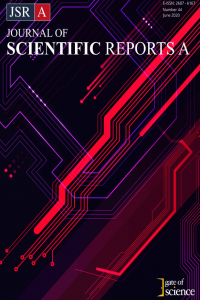BİYOWEB: İNTERNET TABANLI BİYOENFORMATİK ARAYÜZÜ
Biyoenformatik, php arayüzü, mySQL, c++ uygulamaları, sekans hizalama
BIOWEB:INTERNET BASED BIOINFORMATİC INTERFACE
Bioinformatics, php interface, mySQL, c++ applications, sequence alignment,
___
- [1] R. Durbin, S. Eddy, A. Krogh, and G. Mitchison, "Biological Sequence Analysis, Cambridge University Press, Cambridge, (1998).
- [2] T.F. Smith,and M.S. Waterman, "Identification of Common Molecular Subsequences", Journal of Molecular Biology, 147: 195–197, (1981).
- [3] P. Ferragina, and G. Manzini, “Opportunistic data structures with applications” , In 41st Annual Symposium on Foundations of Computer Science Proceedings, 390– 398. IEEE, (2000).
- [4] S. Geman, D. Geman, "Stochastic Relaxation, Gibbs Distributions, and the Bayesian Restoration of Images". IEEE Transactions on Pattern Analysis and Machine Intelligence 6 (6): 721–741, (1984).
- [5] L. Rabiner "A tutorial on Hidden Markov Models and selected applications in speech recognition", Proceedings of the IEEE 77 (2): 257–286, (1989).
- [6] J. Buhler, M.Tompa, “Finding motifs using random projections”, Proceeding of RECOMB '01 Proceedings of the fifth annual international conference on Computational biology, ACM New York, NY, USA (2001).
- Başlangıç: 2020
- Yayıncı: Kütahya Dumlupınar Üniversitesi
Ag/TiO2/n-InP SCHOTTKY BARİYER DİYOTUN AKIM-VOLTAJ KARAKTERİSTİKLERİ
Ahmet Kürşat BİLGİLİ, Metin ÖZER
SOL-JEL SPİN KAPLAMA YÖNTEMİYLE HAZIRLANMIŞ ZnO İNCE FİLMLERİN OPTİK ÖZELLİKLERİNİN İNCELENMESİ
Tacettin YILDIRIM, Aliye ÇANKAYA, İlker ÖCALAN
Özkan Kalfa, Fatih Tekin, Başak Koşar, Cem Cüneyt Ersanlı
BİYOWEB: İNTERNET TABANLI BİYOENFORMATİK ARAYÜZÜ
Yunus Özcan, Murat Ertekin, Gıyasettin Özcan
Fatih Tekin, Özkan Kalfa, Başak Koşar, Cem Cüneyt Ersanlı
TERMOELEKTRİK MALZEME İLE SU SOĞUTMA UYGULAMASI
Nuran Albayrak, Abdullah Keçeciler
e-COL LABORATUVARINDA ELEKTRON ÇARPIŞMA DENEYLERİ İLE TESİR KESİTİ ÖLÇÜMLERİ
Zehra Nur ÖZER, Murat YAVUZ, Melike ULU, Mahmut DOĞAN
GÜNEŞ ENERJİLİ ÇANTA UYGULAMASI
A. Bedirhan ÖZYEŞİL, Abdullah KEÇECİLER
MARKOV ANALİZİ İLE DUMLUPINAR ÜNİVERSİTESİ ÖĞENCİLERİNİN MARKET KULLANIMI
